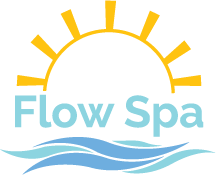Use These Strategies to Properly Return to the Gym While Recovering Your Best Post-COVID-19
For many of us, our training has been off of peak for months now. What’s going to happen when the gyms reopen?
I have a thought that we may see an increase in sports-related injuries and rhabdomyolysis as people get back to their routines and feel the urge to push as hard as they were used to before COVID-19 and gyms closing. Rhabdomyolysis (rhabdo) is the breakdown of damaged muscle that can occur in athletes who overtrain by doing too much work without adequate recovery. It’s a dangerous condition because it can lead to kidney damage in addition to the effects of overtraining syndrome.
As gym goers return to their fitness centres, we need to remember the importance of adequate recovery and training programs that are designed for making progress over time.
Here are some ways to approach getting your grind on responsibly once back in the gym.
Listen in to this discussion on the FlowCast
Ramp up your volume now.
Knowing that gyms in Ontario are gearing up for re-opening soon, the first thing that I encourage anyone who is camping outside the gym with their Zubaz pants and fanny pack to do is start to increase the volume and intensity of your home workouts now. Do more bodyweight workouts and incorporate the exercises that you don’t like because they hit your weak points. If you’ve been sticking to a program consistently throughout the last several months, try to do whatever you can to increase the intensity by adding weight to the movements. Throw on a backpack loaded with books if you need to.
If you’re stuck on what you can do to ramp up the intensity right now, it’s the perfect time to support a local personal trainer and get a sensible training program for returning the gym designed for you.
Start slow - you’re not going to be at your best immediately
So your local gym has announced that they’ve reopened and day one looks like the onslaught of people who’ve made resolutions at New Years to get in shape.
Everyone is training like it’s the zombie apocalypse and the only suitable soundtrack to fuel such intensity is an 80’s Training Montage a la Eye of The Tiger.
This is where we will see the risk of overtraining and potential injury run at a fever pitch in the oncoming months.
In the training world, we talk about having true one-rep maxes and training maxes. And this is the time to be extra conservative with the percentage of your one-rep max that you use. A typical training max is set at 95% of your true one-rep max so that you can continue to make progress without getting stuck at a plateau and also for reducing the risk of injury, which is especially important for training athletes.
It would be wise to consider working off of 90% of your true max or even 85% when programming your volume and intensity at least for one training macrocycle of 4-6 weeks as you get back into the gym.
After your muscles and nervous system have re-adapted you can start to resume a little more of your normal training, provided that you keep in mind the need for recovery and balancing the stress that isn’t going away anytime soon.
Implement proper recovery now
Many of us use the gym as a way to “de-stress” so we often forget that it is imposing additional stress on our bodies.
Training too hard - non-functional overtraining - is one of the most common sources of stress alongside things like poor diet and breathing patterns as well as relationship and work stress. In normal times we don’t have this additional burden of the anxiety surrounding the global health situation and recessions which only further stoke our stress levels.
Before you get back into the gym and start training hard again, identify the ways that you like to recover and restore your body so that you can plan it into your schedule. This is just as important for peak performers as the training itself and is one of the strategies that separate the world-class from everyone else.
If you are training hard and working hard, there should be recovery time included in your daily schedule with longer sessions in which you treat yourself with doing the things that help you relax and enjoy at least once or twice per week. This could be spending half an hour in the sauna after one of your workouts or going for a float to unwind and decompress.
If you spend a lot of time at a desk, your recharge time may look like getting out to golf or going for a lunchtime walk through the local trails.
The more that you see this as part of your job in staying healthy and well, the better you will be able to perform and fully engage in the other areas of your life.
Join Peak Performance Monthly Coaching
This month’s peak performance training was on functional overtraining and HRV tracking for peak performance. Visit the Flow Academy if you want more advanced training on recovery for training and performing your best.
